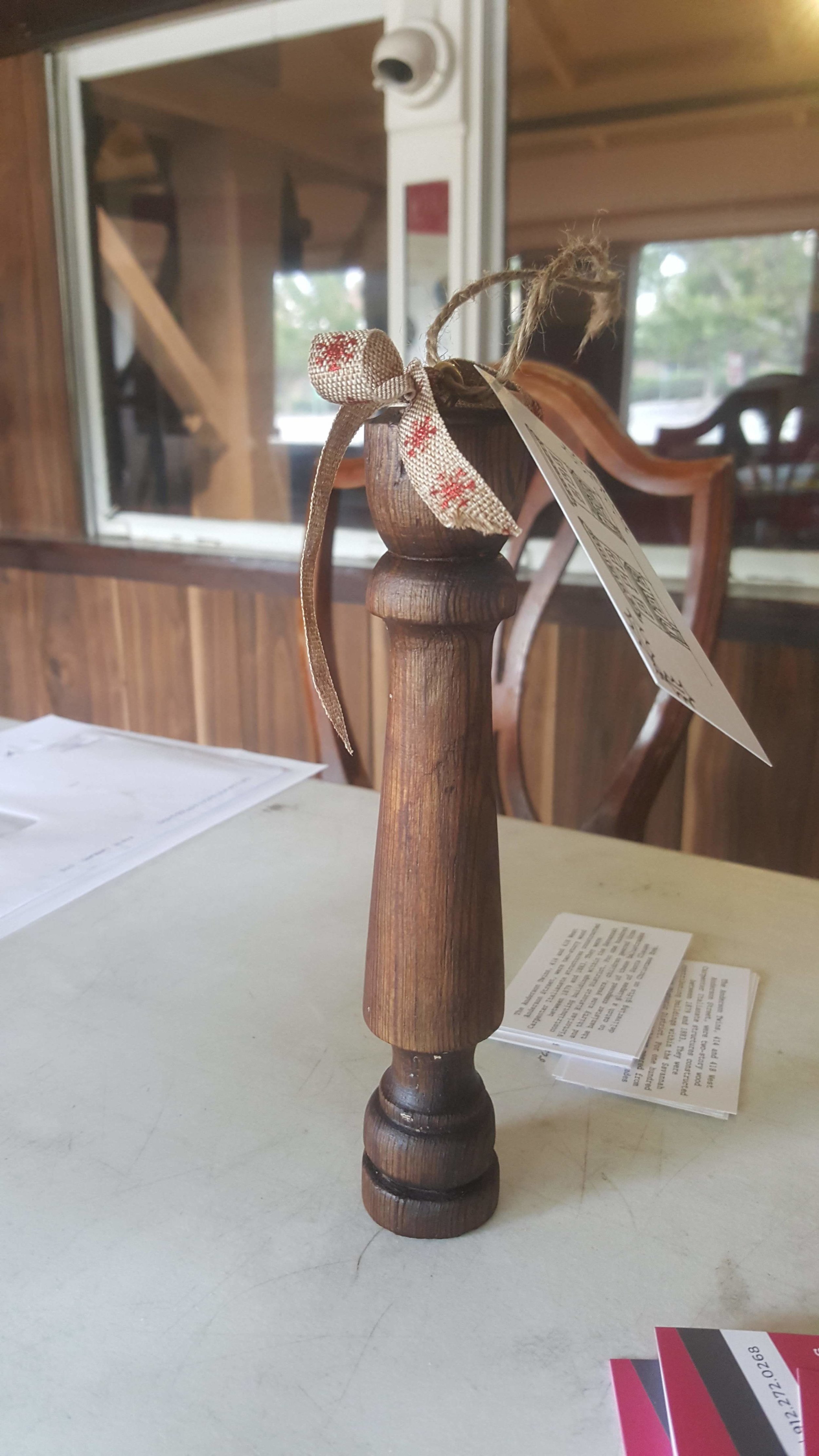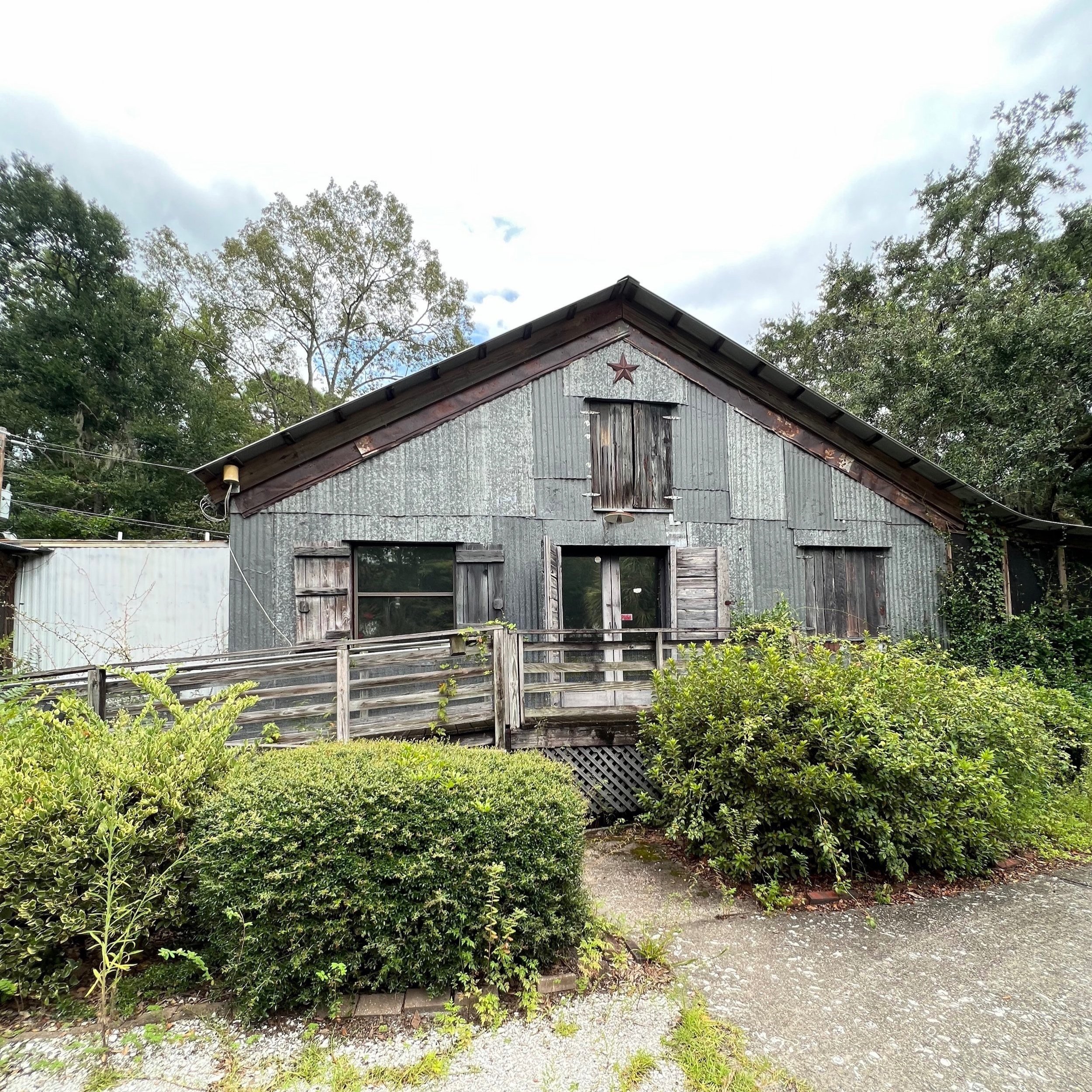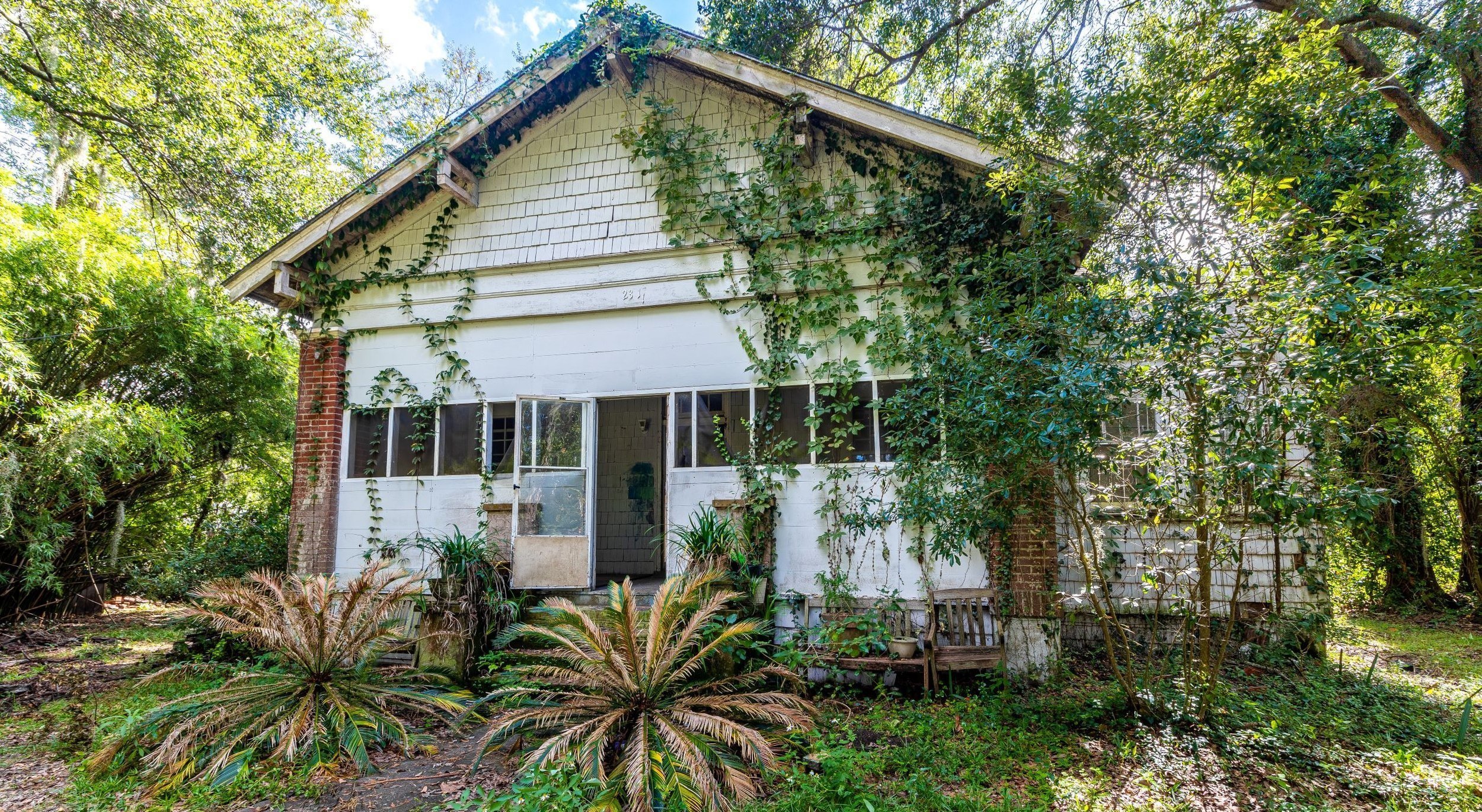Completed September 2018
The Anderson Twins
A pair of Victorian homes in the Italianate style once stood on Anderson Street near West Broad Street (today Martin Luther King Boulevard) in Savannah, Georgia. They were numbered 414 & 418, and boasted ornate porches with carved wooden details, tall wavy-glass windows, and corbels with a leaf motif nestled in the high eaves. These were humble structures when they were built—a testament to the craftsmanship of the era.
Built: 1874
Architect: Unknown
At the beginning of their lives, they were single family homes. Soon #418 was used as a boarding house, likely for railroad workers at the nearby Central of Georgia Railroad. Later it was converted into a two-unit structure.
By 1939, records reflect the changing demographics of the neighborhood, listing the first African-American residents of the Twins (annoted with a (c) for colored in the records). Below is a list of residents from the Georgia Historical Society (research conducted by Shea Caruso):
1900
414 William H. Wall (wife Mattie E.) Sanitary Inspector
418 William R. Fulton (wife Tina) Green Grocers
1901
414 William H. Wall (wife Mattie E.) Sanitary Inspector
418 William E. Berry (wife Mary E.) Engineer Conductor of Ga. Railway
1903
418 is vacant
1904
414 Chas. M. Sanders (wife Lillian) Tinner at 127-9 Jefferson
418 W. W. Barrough (wife Martha) coll
Barrough, Mary Miss
“Millard H., cak C of Ga., boards 418
“Ollie, Miss, dressmaker, boards 418
1905
418 Saunders, Wilhelmina, widow A.L
1910
414 Handlee, Christopher S. (wife Sallie), asst. foreman boilershop C. of G.
1928
414 Vacant
418 Vacant
418 ½ Sykes, J. Lloyd (wife Lila) lineman Bell Tel. Co.
1939
414 Mason, W.M. (c)
418 Worlds, Richard (c)
418 1/2 Bussey, John (c)
Historic Photographs
We uncovered many fascinating details about the craftsmanship of these homes during our deconstruction. Perhaps our favorite were the “marriage marks” scribed into the wood at the mill, used as a guide to put the house together on the site. (See photos below.)
The Anderson Twins were built at a time of great change in building tradition. Traditional timber framing using mortise, tenon, and wooden peg was giving way to the convention of balloon framing, which relied entirely on nails for joinery. We found examples of both methods inside the walls of the Twins, a time capsule of an era in flux. Hand-forged nails, manufactured cut nails, and modern nails were all found in the twins.
The ship-lap style siding was particularly impressive on the exterior of #418. Many of the pieces ran the full length of the building, over 30 feet of supple pine that, despite the ages, is still in good shape and can be reused.
Despite the damage to the structures, much was worth saving:
RECLAIMED: 65 tons
RECYCLED: 10 tons
LANDFILL: 45 tons
The collapsed pile, all that remained of #414, had been down for over a year when we tackled the project. Yet even still, we extracted many lengths of antique heart pine in perfect condition from the mess. This lumber is remarkable in many ways: it is rot resistant, pest resistant, and antimicrobial, not to mention beautiful. Long leaf pine, which once grew in the vast forest of the southeast, is now almost entirely gone from our natural landscape. Yet it can, and must, be harvested from failing structures like the Twins, rather than sent to waste in the landfill.
Material History
Above: Photo taken June, 2018. #414 (right) had collapsed in Hurricane Irma, #418 (left) was leaning dangerously, bound to fall in the next storm.
Historic Maps
Student Work
Students of Architectural Drafting and Historic Preservation at Savannah Technical College spent a semester building a digital models of the Anderson Twins. They visited our project to measure elements of the structures and conducted independent historical research to inform their renderings. View their work below! Great job, students!
Renderings by Ken Oliver
Renderings by Tyson Withers
What We Saved
Customer Creations
Watch our Process
#savetheandersontwins
check out our Instagram posts about this project!
stories highlights
watch videos taken on Instagram during our deconstruction!
What is your relationship to the Anderson Twins?
Do you have insight into the history of the Twins? Have you made something out of the materials we reclaimed from the Twins? We would love to collect your histories and re-use stories to share in our growing archive!






















































